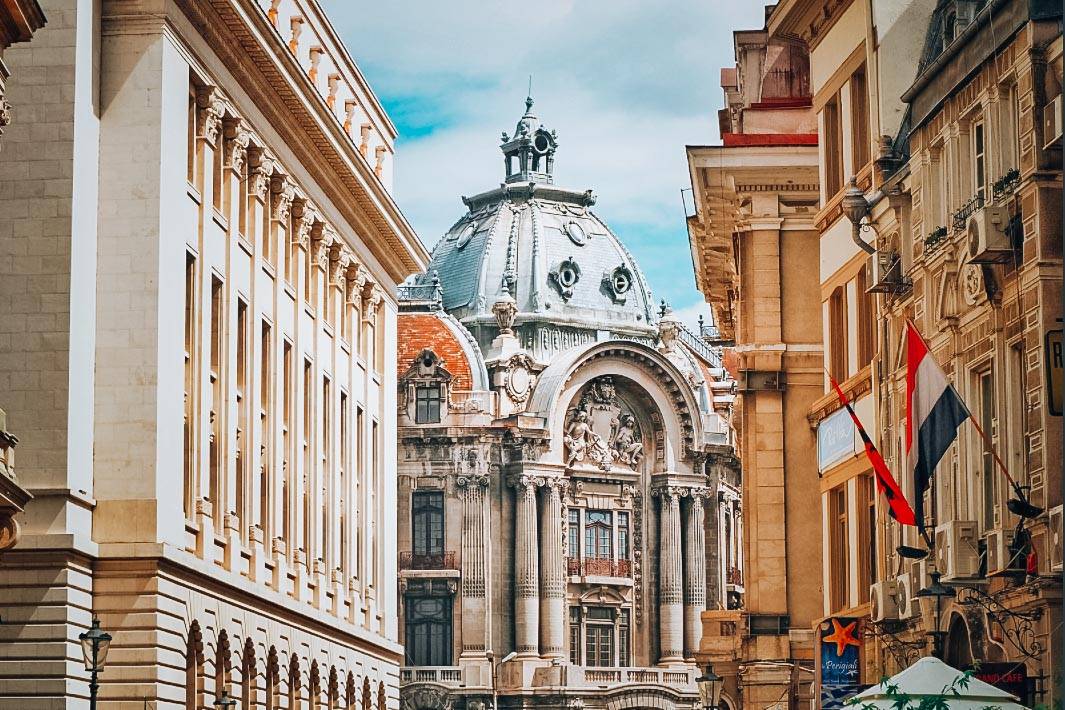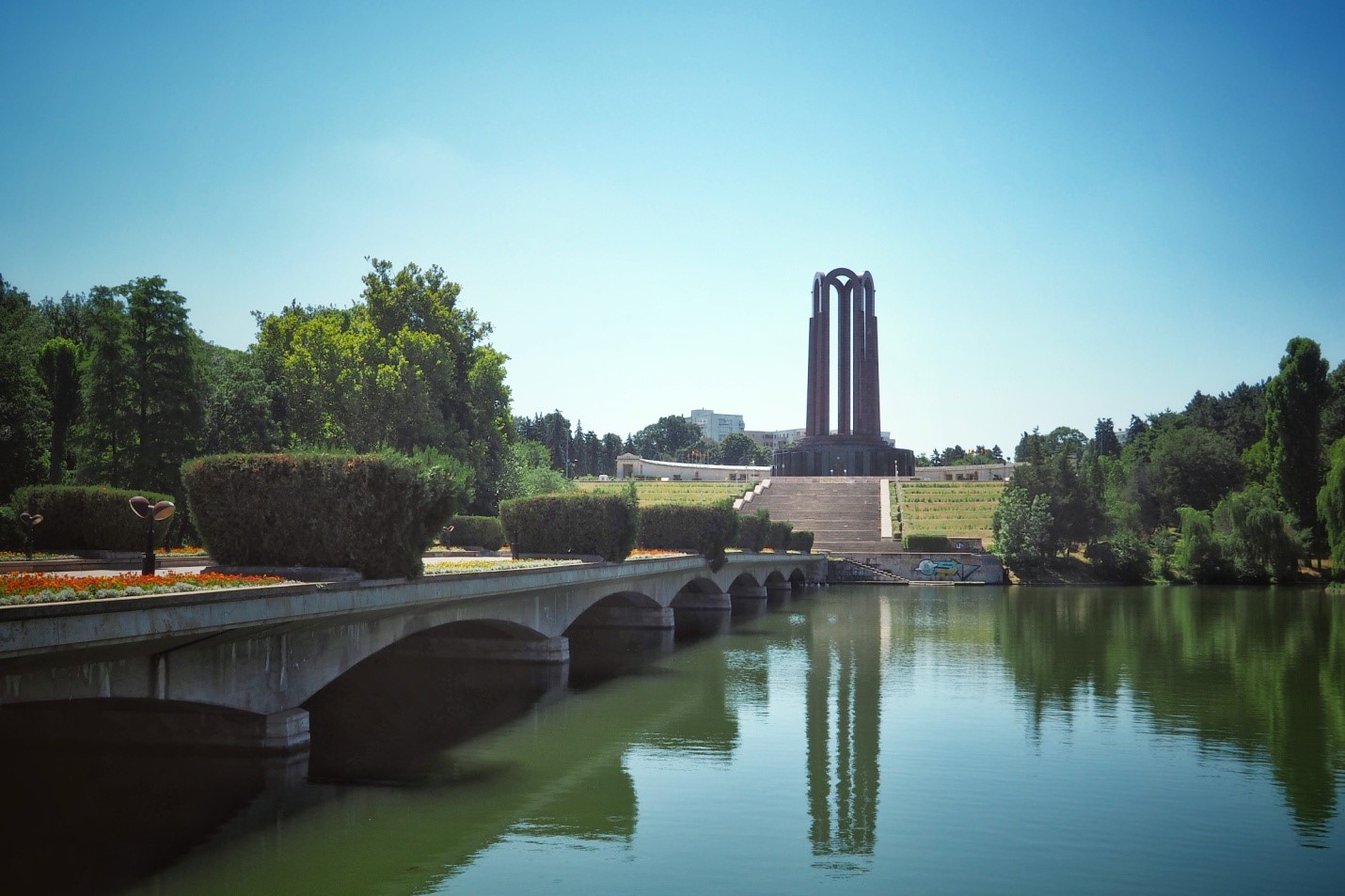BUCHAREST
Bucharest – elegance, charm and history
Bucharest, the largest city in Romania, was first mentioned in documents in 1459, and designated as the capital of Romanian country in 1659 by Prince Gheorghe Ghica. In 1862 it became the capital of Romania.
Bucharest is the most important political, economic, financial, banking, commercial, cultural, educational center in Romania, being the first entry point into Romania. The city offers big convention facilities, cultural venues, traditional “shopping arcades” and recreational areas.
There are different stories about the origin of the name București. One of the stories is connecting it with the name of Bucur, which, according to different legends was a prince, a shepherd, an outlaw, a fisherman or a hunter. The stem word Bucurie means “joy” in Romanian language, and it is believed to have Dacian origin.
Today the city of Bucharest sprawls on a surface of 228 square km, and this surface increase every year, and it is populated by almost 2 million inhabitants (2.4 including suburbs), which makes Bucharest the 8th most-populous city in the European Union. Considering its population, Bucharest is one of the largest cities in Southeastern Europe, and the 8th largest city in the European Union within city limits, after Berlin, Madrid, Rome, Paris, Vienna, Hamburg, Warsaw.
 |
Time has preserved the scent of the past and has embedded it in never-ending stories. Bucharest nowadays is a mix of old and new, traditional and modern, in a neoclassical style that is showing originality and charm. In Bucharest you can find a mix of architecture, from historical ones to inter-bellum, communist-era and modern ones. In the period between the two World Wars, the city's elegant architecture and the sophistication of its elite earned Bucharest the nickname of "Little Paris" (Micul Paris).
Many historical traces can be found in Bucharest: Old Court (XV – XVII centuries), one of the most important medieval constructions, and New Court from 1771, known also as Burned Court, Manuc’s Inn (1808) the best preserved old inn in Bucharest, Colțea Church and Hospital (1701 – 1704, rebuilt in 1888), the Arch of Triumph reminding the reunion of the three Romanian countries in 1918, and Palaces like Ghica (1882), Cotroceni (1893), Știrbei (1835), Cantacuzino (1898 – 1900), University (1857 – 1869), and many others important building, hosting today important institutions, mainly cultural ones.
 |
The Lipscani area is the oldest remaining part of Bucharest and is known as the “historical center”. This district was Bucharest’s most important commercial zone from the Middle Ages to late 20th century. Also, the prince had his court here – the ruins can be seen today on the French Street. While probably famed more for its history and its nightlife, the Old Town area of Bucharest is in fact home to some superb places to eat: both high end, fine-dining establishments as well as kebabs and take-aways.
The XX century make Bucharest be known also as the place with the second worldwide building, the Parliament Palace, used to be called also the People’s House. The city has been undergoing major construction and modernization works in recent years, such as the Basarab Overpass and the National Arena.
Bucharest climate is temperate-continental one, and here you can enjoy each of the four seasons: spring, summer, autumn and winter. In every of these seasons Bucharest is welcoming you with its charming parks and gardens, inviting for a walk in Cișmigiu (1845), Herăstrău (spread over 187 hectares around Herăstrău lake) where The Village Museum is located, Botanical Garden (1860) hosting more than 10,000 species of plant on 17 hectares, Carol, Youth, Plumbita, Bordei.
 |
The art lovers will be delighted to find here the Romanian Atheneum, built in 1888, hosting every year during September one of the most outstanding international classical music festival, George Enescu festival. The National Art Museum, first built in 1815, The National Theater, The National Opera can be other choices for those wanting to find more about Bucharest artistic life.
You can find more information and places to visit in Bucharest by accesing http://romaniatourism.com/bucharest.html You can download here a map of Bucharest http://romaniatourism.com/romania-maps/bucharest/bucharest-map-harta-orasului.html
Facts about Bucharest:
- • Bucharest inaugurated its first bus in 1840, becoming a pioneer of public transport.
- • Bucharest was the first capital in the World to be illuminated with Kerosene.
- • According to the Academy of World Records, the People's House in Bucharest is the 2nd largest building in the world, the most expensive and the heaviest building ever built.
- • An important boulevard in the heart of Bucharest was the first paved road in Romania, built in the city in 1692. Back then, the road was called Mogoșoaia Wood Paved Road, because it was paved with wooden planks. In 1882, the street was paved with stone, and in 1878, after the Romanian army used the street to make its triumphal entry into the capital following the victory of the War of Independence, the boulevard was named Calea Victoriei, the name we all know and use today. It was also the first street in Bucharest to be lit with candles on the night of 1845!
- • Union Boulevard (Bulevardul Unirii) is the longest in Europe.
- • The Politehnica metro station is paved with marble and granite slabs containing fossils from 180 million years ago.
- • The Arch of Triumph was originally built of wood in 1922 to honor the bravery of Romanian soldiers who fought in World War I.
- • Bucharest is twinned with 9 cities around the world. The most important cities are Beijing, Atlanta, Budapest and Hanover.
- • The oldest park in Bucharest is Cișmigiu Park - opened to the public in 1860.
- • The famous ‘Mici’ were invented in Bucharest.
- • Saint Demetrius is The Patron Saint of Bucharest.